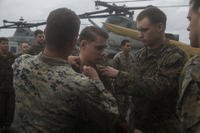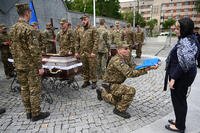1 in 5 Tankers Sit in Depots
The Air Force's latest mobility study found the United States could not muster enough tankers to execute two of three likely scenarios, senior service officials told the House Armed Services air and land forces subcommittee today.
One of the principal reasons for that is that the aging tanker fleet needs so much patchwork and loving care that almost 20 percent of the fleet is in a depot at any one time, Brig. Gen. Michelle Johnson testified. "In two of three scenarios we did not have sufficient tankers," she said. For the big one, two nearly simultaneous large land campaigns, with three attacks on the U.S. homeland, the U.S. needs 103 percent of what we have. For the second scenario, an air and naval campaign that places even greater stress on the tanker fleet, the shortfall was even greater: 120 percent of what we have, Johnson said.
Given that the Air Force, wants a new tanker and a better quality tanker as soon as possible, she told subcommittee chairman Rep. Adam Smith.
Moving up several levels, the Mobility Capabilities and Requirements Study (MCRS) changed and refined the Air Force's estimate for what is needs for transport by examining for the first time ever the stresses inflicted by an irregular warfare scenario. "It is also the first in-depth look the department has conducted for mobility that informs both the stresses on the total force to sustain a long war and addresses from a mobility perspective the nation's ability to surge for a second warfight under these conditions," Johnson said in her prepared testimony. The third scenario took into account the absence of well equipped airstrips and resupply facilities.
But the new study also found that the U.S. already has enough air transport, even though Congress has locked in a figure of 316 transport planes as a minimum -- based on the previous mobility study -- the new one found the country can get by safely with somewhere between 274 and 304 aircraft. One of the major factors that resulted in a lower number was the finding that airfields acted as distribution choke points, meaning that even with more planes there would be no improvement in delivery since gear would just pile up at the strip.








